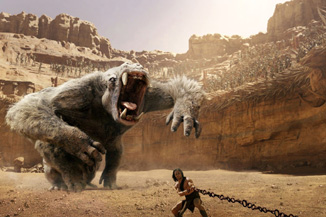|
|
Top 12 Film Industry Stories of 2012: #8The Two Hundred Million Dollar CheckBy David MumpowerJanuary 4, 2013
Also, in a clever implementation of science and knowledge, Edgar Rice Burroughs deduced that the dense bone structure of mankind combined with the exponentially lower gravity of Mars would have a profound impact. The titular John Carter has the ability to soar into the sky as if Barsoom is one giant trampoline for the human race. A Princess of Mars is rich with imaginative ideas, none of which is particularly marketable. People don’t like to root for four-armed monsters. And a guy who can soar through the air is only interesting if there is a basketball goal somewhere in the vicinity. Disney decided that their marketing wizardry was so polished that they could overcome such obstacles. After all, with Harry Potter ending, the marketplace was devoid of dominant franchises. By establishing the John Carter of Mars series, as many as a dozen potential films could be adapted. At a minimum, a couple could be produced before audiences grew tired of the concept. This is the same playbook Disney used with The Lion, The Witch and The Wardrobe. Upon that title’s release in 2005, it quickly became one of the 20 most popular films of all time in terms of worldwide box office. The next two sequels quickly declined in value, something Disney execs anticipated. It was the rationale for their dropping the franchise after the second movie, leaving Fox holding the bag on The Voyage of the Dawn Treader. By that point, Disney had distributed two titles that grossed almost $1.2 billion. With global box office expanding so rapidly, a John Carter franchise could feasibly gross 50% more in two movies.
[ View other Top 12 Movie Industry Stories of 2012 ]
[ View other BOP Lists ]
[ View columns by David Mumpower ] [ Email this column ]
|

|
|
|

|
Thursday, October 31, 2024
© 2024 Box Office Prophets, a division of One Of Us, Inc.


